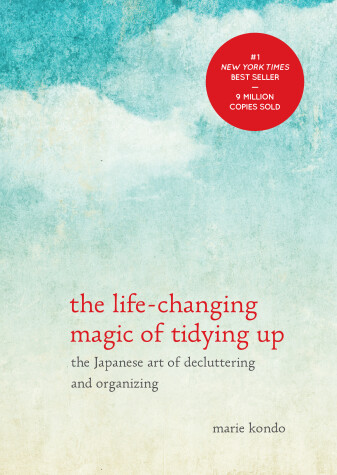Reviewed by clementine on
This book was very easy to breeze through. It did give me an itch to continue on my decluttering process, and some of the advice was very helpful. However, it was a bit woo-woo for my tastes - I just could not deal with the idea of thanking your handbag for carrying your stuff around and treating your clothes like people. I also thought that her method was kind of impractical - there's no way most people can declutter their entire houses before they start putting anything back where it belongs, which is central to her method. Finally, the idea of emptying my purse every day and then putting the exact same things back into it is ridiculous. Maybe it's because I carry small bags that never end up with random crap in them, but NO.
Also, some of her methods were stiflingly prescriptive to me. I think that when it comes to organization and storage, it's most important to find a way to suit your own needs, and folding every sock however many times and finding your shirt's "sweet spot" when you're folding it is just... not necessary for every single human on the planet. I do wish some of her advice was a bit more flexible or generalized, rather than "YOU MUST LINE YOUR STOCKINGS UP IN A SHOE BOX FOLDED THIS SPECIFIC WAY."
That said, there were various tips and ideas that did resonate with me. In particular, I liked some of what she had to say about the organization process. I definitely agree that more storage =/= more organized, and I liked the idea of storing things where they are easy to put away, rather than where they're easy to take out. Kondo also really drilled home the idea of questioning why you think you need things, especially paper goods. I know I'm definitely guilty of holding onto manuals that will never get touched! Finally, the idea of keeping things that "spark joy" is definitely useful, to an extent. Obviously, there are some things you need to hold onto that will never spark joy because they are boring yet necessary, but it is a very freeing mentality when it comes to things like clothes and books. Even after a few pretty ruthless rounds of decluttering my clothes, I do have things that don't spark joy but that I hold onto because they're in perfectly good condition and there's no real reason to get rid of them. I also think the idea of primarily keeping objects that spark joy is useful to keep in mind when shopping, as well - do I want something because it's cute and trendy, or because it legitimately sparks joy?
Overall, I didn't find this book life-changing and there were definitely parts that annoyed me. But I think that most people can take a few useful things away from it. I certainly did.
Reading updates
- Started reading
- 29 April, 2015: Finished reading
- 29 April, 2015: Reviewed
